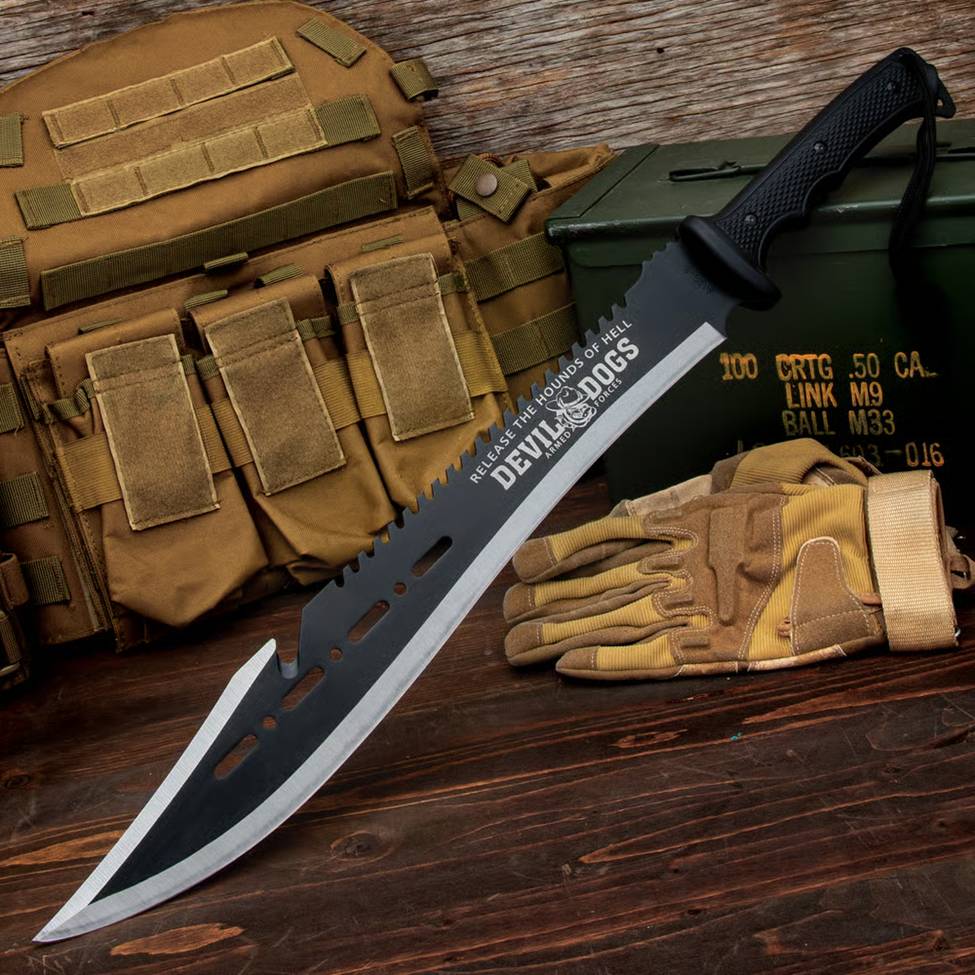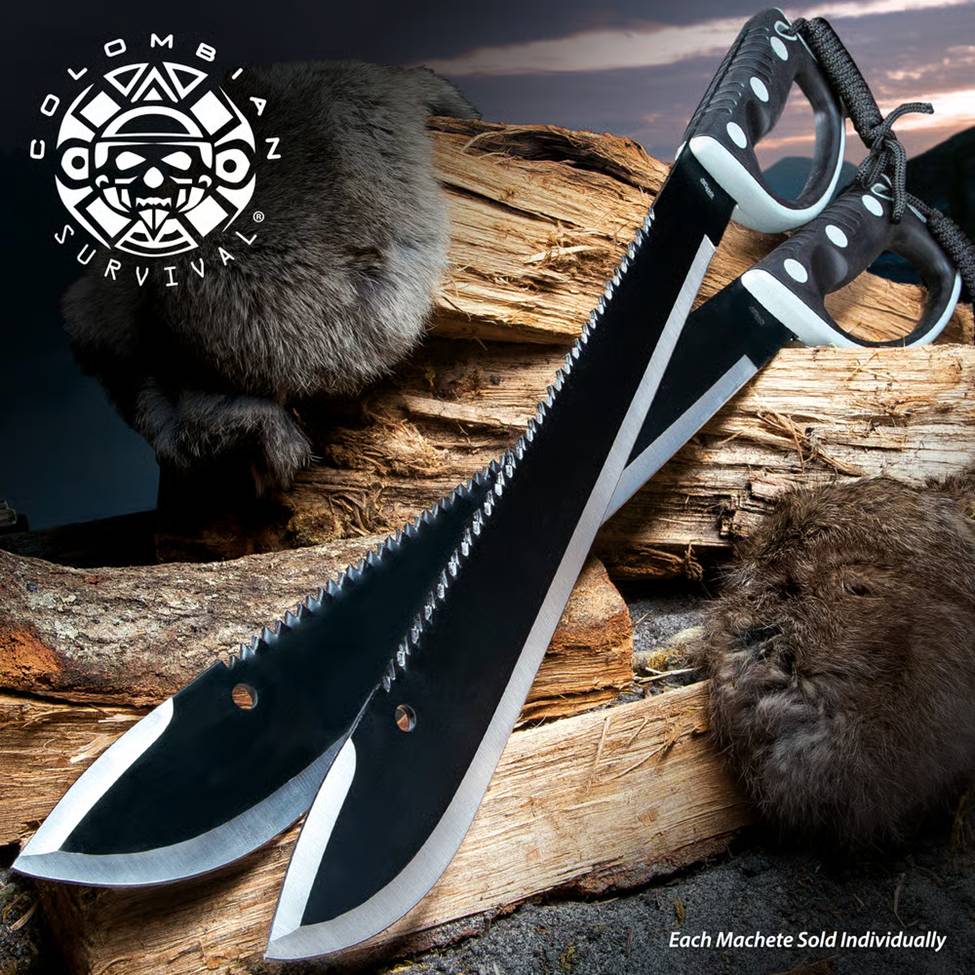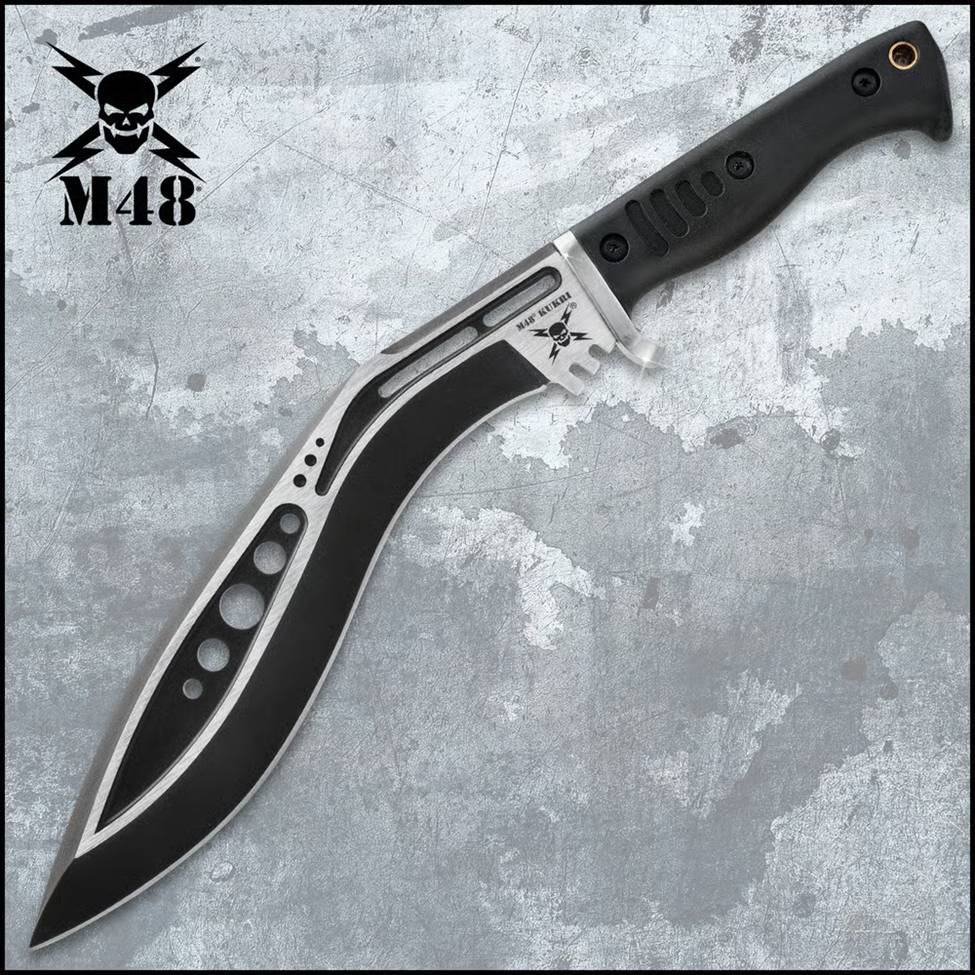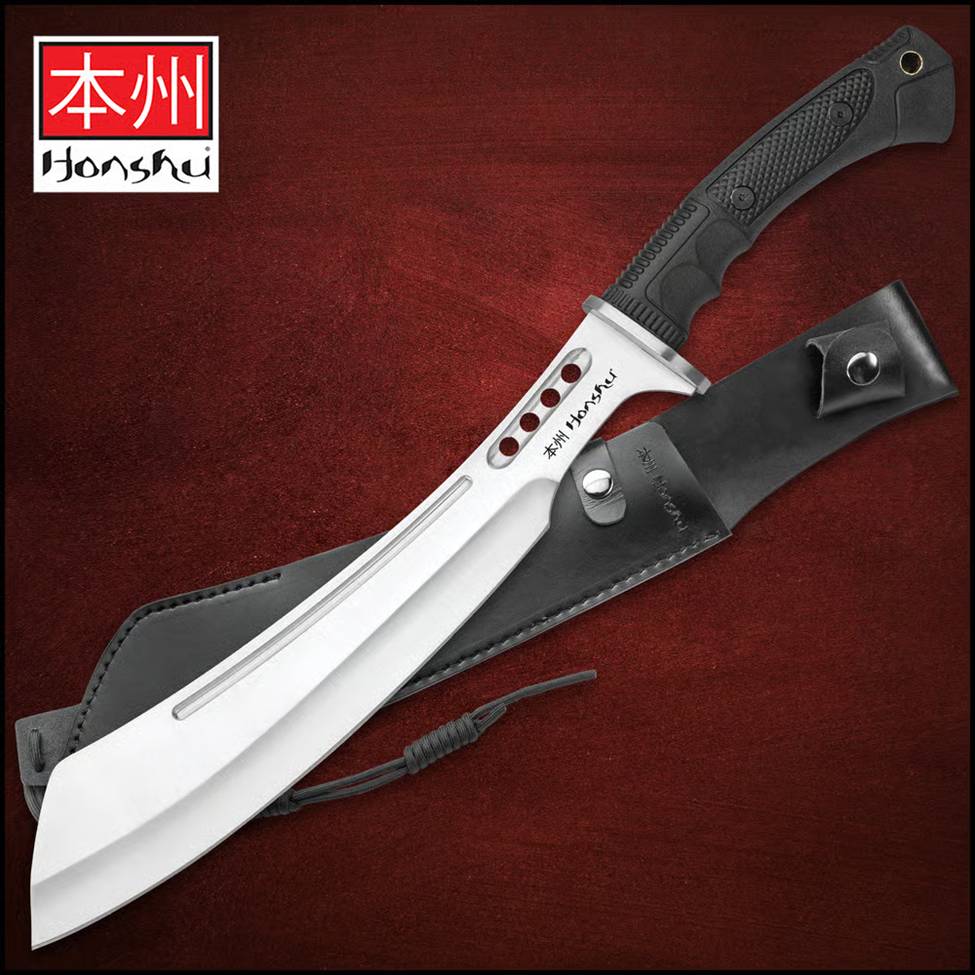Common Machete Knife Profiles


A machete is a long, bladed tool, intended to be used with one hand, that is useful for chopping and slashing. The main use case for a “machete knife” is for clearing wildland and maintaining trails, especially through thick underbrush. The basic machete knife design likely originated in Spain and evolved into the forms we have today. It’s believed the name machete is a diminution of the Spanish word “macho” which means “sledgehammer,” which gives machete the meaning “small sledgehammer.” All the same, here are some of the more common machete knife profiles along with their relative virtues.
Bush Machete


The bush machete profile is likely the most recognizable of all machete knife patterns. It generally sports a straight-backed design with a generous curve near the tip and a fairly oblique point. Sometimes the spine has a toothed “sawback” configuration. It’s highly portable, relatively lightweight, handles well, and because the blade is not too wide near the point, can be easily outfitted with a sheath.
This machete design is believed to have originated somewhere in South or Central America and is highly effective at cutting through green vegetation for the purpose of clearing a trail. While not highly specialized, the bush machete profile is one of the most effective all around patterns and is highly adaptable to backcountry use.
Bolo Machete
The bolo machete, often simply referred to as a bolo, is a design that originated in the Philippines and which has a wide range of agricultural uses. The basic bolo profile consists of a relatively short blade with a flared, leaf-shaped profile that places a lot of weight towards the point. Since it is fairly compact, it is easier to use in tight confines than a pattern that is generally longer, like a bush machete. The net result of this pattern is that bolo machetes are very blade heavy and are therefore very effective for chopping. Therefore, the bolo is a popular pattern among farmers and harvesters because it can be effectively used for harvest row crops like rice and peanuts. It’s also a popular pattern among cane farmers.
Bowie Machete
The bowie machete is effectively an adaptation of the bowie knife, but in a larger pattern that is more effective for slashing and chopping than the smaller knife version. Like its namesake, the bowie machete has a clipped point, and a generously curved belly. This makes it somewhat effective not just for chopping but also for thrusting and piercing, which is a rare attribute among a machete knife. This is a pattern that likely originated in the United States, and because it is effective for piercing and skinning has some applications for hunters and other sportsmen. Two notes for this pattern are important, though - the clipped point results in a slightly more fragile tip, and the removal of blade stock from the end of the blade diminishes its efficacy for slashing and chopping.
Bilhooks
The billhook is a very old machete pattern with an inward curve like a talon blade with a point that sits below the main portion of the belly; it is the opposite of a pattern with a trailing point. Because of the inward curve, billhooks are highly effective for slashing as well as for drawing cuts and pruning, as well as a technique known as “snedding” which refers to the process of stripping side shoots and buds off a branch. Because the point is inwardly curved, it can be used for pulling cuts and drawing, specifically for maintaining hedges as well as for coppicing. Oftentimes, this is not referred to as a machete but simply as a billhook.
Cane Machete
The cane machete profile is a short, stout blade that is wider near the end and which usually lacks a point. This profile places a lot of mass towards the end of the blade, which makes it akin to a hatchet or ax, and which makes it perfect for chopping. This fact yields the name; they are called cane machetes because they are common tools among cane formers and hands, which can be used for harvesting and trimming sugar cane. The basic pattern is also highly effective for managing rice, bamboo and corn - in the latter case, it might be referred to as a corn knife, and it is sometimes also referred to as a cleaver style machete.
Kukri


The kukri, a pattern which originated in Nepal, is a very popular pattern in Northern India. Its smaller size really makes it more of a knife than a machete but the utility of its blade profile for chopping often lumps it in with machetes. The kukri’s blade consists of three main parts; a point, a leaf-shaped chopping section of the blade, and a smaller area inside the belly near the hilt that is sharpened at a finer angle than the belly is. Because of this unique profile, it can be used not only for thrusting, but for chopping, while the inner section of the blade can be used for whittling or carving. Moreover, the weight-forward design of the profile makes it highly effective for splitting, clearing, and other rough work usually reserved for larger, heavier knives.
Parang


Lastly, we have the parang, which is an Indonesian design that usually has a generously curved belly and a swept edge with a fairly oblique, even blunt point. While some patterns can be useful for piercing or thrusting, the weight-forward pattern is generally well-adapted for slashing and chopping. With fairly thick blades and relatively even weighting, they are highly effective for slashing and chopping.
Practical Uses for a Machete Knife
Regardless of the pattern of machete knife that appeals to you or works best for your intended application, machetes are generally effective for slashing and chopping. The best use for most machetes is for clearing land, but some, like bowie machetes and kukris, can also be relatively effective for piercing and detail work like carving.
Shop Machetes and Knives Here
We carry a wide range of machete knife patterns here that are specialized for different tasks. Explore our collection here and if you have questions about product specifications or machete patterns, get in touch with us directly before you buy.